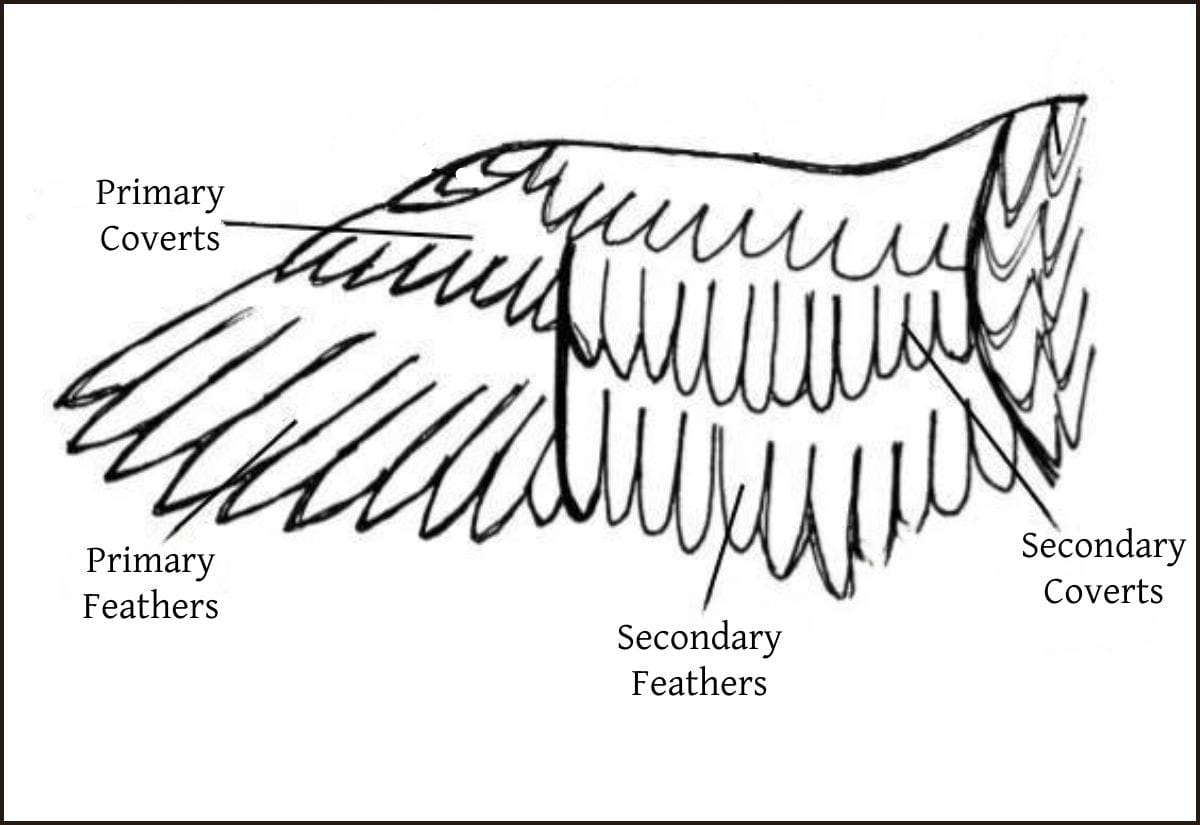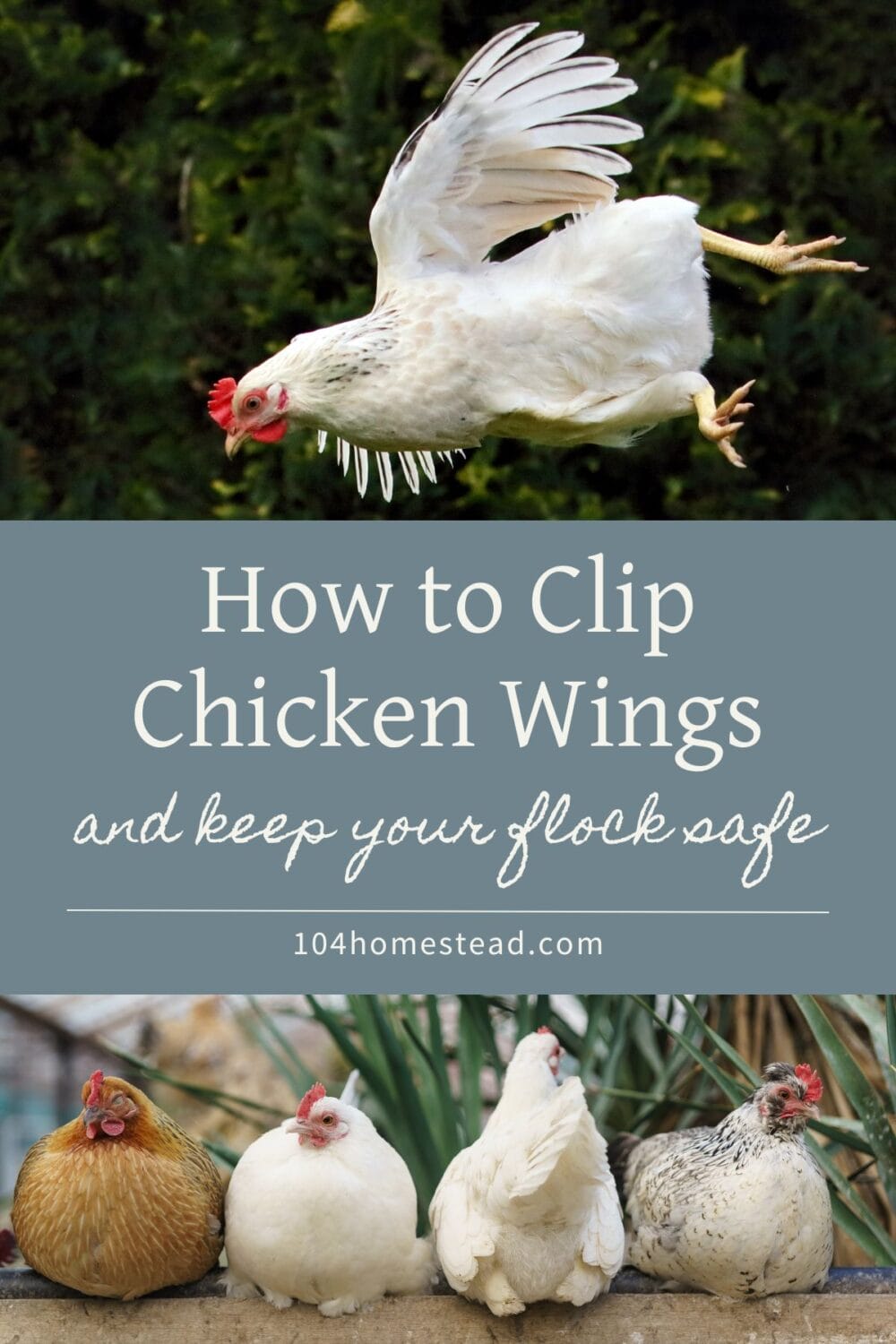How to Clip Chicken Wings and Keep Your Flock Safe
Learn the safe way to clip your chickens’ wings with my step-by-step guide. Keep your flock secure with these expert tips.

Do you have well-behaved birds that stay behind their decorative fences? Do you have your birds enclosed, like Fort Knox? Do your birds have the luxury of wandering wherever they please? If you said yes to any of these questions, I’ll see you next week.
Today’s post is for those of us who have naughty birds who are constantly trying to fly the coop, literally.
I have a 4′ fence that suggests to my birds that they stay in the back part of the property, but a few prefer to wander into the front or even to the neighbor’s house. The neighbors have the best bird seed, or so the chickens tell me. When the girls get a little overzealous, the troublemakers get their wings clipped.
How to Clip a Chicken’s Wing
Always make sure that clipping your chickens’ wings to stop them from flying is done in a way that is safe and does not stress the bird out. The goal is to make it harder for them to fly without hurting them. Here’s a simplified step-by-step guide:
Step 1: Prepare Your Tools and Environment
Get some sharp scissors or pet nail clippers ready, and if you need help holding the chicken, ask someone to help you. Make sure the chicken is comfortable and that you are in a well-lit area.
Step 2: Identify the Feathers
Are you aware of the different kinds of feathers? The wing’s long feathers at the tip are the primary feathers, and they are the ones that allow for flight. The secondary feathers are located closer to the body and play a supporting role in flight. Coverts are smaller feathers that sit on top of the primary and secondary feathers and help the wing stay smooth.
Step 3: Hold the Chicken Securely
Hold the chicken firmly but gently, or have someone else do it for you. To keep the chicken calm, you might need to wrap it in a towel. Carefully spread out one wing to show the feathers.
Step 4: Locate the Correct Clipping Spot
Figure out which flight feathers are the primary ones and which ones are the secondary ones and coverts. For clipping, you will be focusing on the primary flight feathers and maybe the longest secondary feathers.

Step 5: Clip the Primary Flight Feathers
Using your scissors or clippers, trim the outer half of the primary flight feathers. Make sure you do not cut into the coverts or secondary feathers; this can hurt the bird and will not prevent flight. When you cut, do not get too close to the wing so you do not clip the blood feathers, which can cause pain and bleeding.
Tip: If you do cut too short, take a small amount of cornstarch and apply it directly to the bleeding feather’s cut end. You can use your finger, a cotton swab, or a small spoon to dab the cornstarch on.
Step 6: Observe the Chicken
After cutting the chicken’s wings, carefully let it go and watch how it acts. The chicken might be unsettled at first, but it should get used to it quickly.
Feathers will grow back after molting, so this process may need to be repeated annually or as you notice the feathers regrowing.
A Video Guide
If you’re more of a visual learner, this is my favorite video tutorial. This lady does a great job at describing the process and does it with the comfort of her chicken in mind.
The Dangers of Wing Clipping
Wing clipping isn’t all rainbows and sunshine. There are definite hazards associated with wing clipping. The most obvious are predators. Chickens flee predators. Very few will fight, which is good since most predators would win hands down. If you have taken the bird’s ability to flee, you have made it easy pickings. When it comes to this danger, you need to look at the pros and cons. If your neighbor has a dog or you live where there is a lot of traffic, assuring your bird doesn’t get out near those dangers outweighs the chance that a weasel will get into the pen.
Other dangers seem mild in comparison but are worth taking a look at.
Chickens roost. We all know that. My lighter birds can still get on and off the roost easily, maybe a bit more flapping than there used to be. I have an Australorp that is too heavy to get on the high roost when her wing is clipped. She has also been wiped out when getting down because she can no longer glide. She has hit the wall (literally) a few times, which has the risk of breaking her neck or causing an injury. She now has a ladder, which she uses.
You need to remember how wing clipping is going to affect your birds’ daily activities.
Frequently Asked Questions
Wing clipping can be scary. Here are answers to some of the frequent questions that come along.
If my guide on how to clip chicken wings was helpful, you may be interested in other ways to make your flock’s home a better place to live.
Check out our long list of plants that are safe for and good for your chickens. Want to know about the best bedding for your birds? Find out why sand might be the best choice for your coop because it is easier to clean and better for their health. Making sure your chickens are happy and healthy means designing the perfect coop. My in-depth guide to key coop design elements will help you make sure your setup meets all of your flock’s needs. And when it comes to laying eggs, comfort is key. Check out my unique and inexpensive chicken nest box ideas, along with useful tips on how to get your hens to lay their eggs in the right places.
If you’ve found value in this blog post and enjoyed reading it, why not share it with your Pinterest community? Pin the image below and spread the love!

Clipping your chickens’ wings is a practical and humane way to ensure their safety and prevent them from wandering into danger. By following these guidelines, you’ll maintain a happy and secure flock, giving you peace of mind and keeping your chickens close to home.
Have you tried clipping your chickens’ wings before? Share your experiences or any tips you’ve discovered in the comments below.

Thank for info. We just purchased 6 pullets. 2 weeks old. We are newbies
Great information! We only clip one or two birds that keep getting out. It is perfectly harmless as long as you know what you are doing. The video is great!
I really liked the video and yes, I do agree with clipping all my flocks wings. I have about 60 total and my entire property is surrounded by a 6 ft. chain link fence. However, I have 1 Rhode Island Red rooster and 10 RIR hens I use for breeding purposes and they have their own little portable chicken tractor I move around in a 100 square foot area fenced in with 4 ft. high poultry netting. Not only do I use them to breed my own birds, but I also use them to till, spread compost, and get a specific area ready for permaculture. They do free range in their run and are fed organically.
The other birds are free to roam and prepare my other 2 acres as they are my egg layers as well as workers for spreading compost also. I clip all of their wings as well as mark them with ankle tie wraps of different colors to keep up with who is where and how many I have. Clipping wings does not hurt the chickens if done right and if you play your cards right, you can have fantastic soil for permaculture gardening.
SO you are basically amputating the chickens to keep them in coop? Is this ethical etc i dont know if i could do this to my hens, they are lively but it would be wrong to amputate just to keep them in. I couldnt imagine doing that to a human like a child lol amputating them for containment sounds like a horror movie love x
I think you’re misunderstanding her metaphor of wing clipping to a limb. Yes, the feathers have a purpose as limbs do, but clipping them is similar to getting or giving a haircut. It is in no way an amputation. The chicken will still live a happy and fulfilling life. It is a matter of personal choice and health/safety and well-being of the chickens. In more urban areas, such as where I am, not clipping my chicken’s feathers will lead to certain death because she may escape my yard and end up in the road or a neighbor’s yard. On the other hand, if you live in a more rural area, not clipping the wings of your chicken will allow her to flee from predators. I trust that you know what’s best for you and your chickens, but so do other chicken owners and wing clipping is in no way unethical.
Happy chicken keeping <3
how do you keep the chickens from killing each other and from pulling feathers from one another
If that’s happening with your chickens, I’d say you have a space issue. Mine never fight. Remember, chickens need at least 4 square feet of indoor space and 10 square feet of outdoor space to thrive.
I recently clipped both wings on our young hens. Very large 2 mo olds. They could fly all over the converted dog run. I may have not cut enough. Not letting these 6 youngsters out in the yard with the 3 older. Our fence is only 4 ft high.
The key to success is only clipping one wing and waiting until they have gotten use to flying. Those younger birds learn to adapt quickly, whereas the older ones are so set in their ways, they have trouble relearning their flying technique.
thank you for the clipping info! We got our first little flock this spring and this post has added more info to help to decide wether or not to clip when the time comes. We live on a farm and have plenty or room for the girls (and boy) to roam. I had never though about the not being able to hop up on the roosts or flee dogs.
Thank you again!
I’m glad I could give you confidence to make a good decision for your flock. We’ve lucked out with several of our girls this spring. They put on a bit too much weight this winter to clear the fence. The leghorns still escape, but even wing clipping doesn’t slow them down.
Thank you, because we need to do this soon to our girls.
Glad I could help. I was going to do my own videos, but the way my leghorns feel about being handled, no one would believe me when I said it was painless. I practically wrestle them when I do it 🙂
Love this post, very thorough. I have to clip the wings of several of our birds who have shown a tendency to escape. We live in the city with large dogs on either side of our property. If one flies over the fence she will be a goner in a matter of seconds, Everyone is in a different situation but if it’s a matter of clipping a hen’s wing or having a neighbor’s dog rip her to shreds, I’ll clip every time. Thanks for and informative post!
Thank you Leah 🙂